COLOUR RING RESEARCH LITTLE RINGED PLOVER (Charadrius dubius)
In 2001 in the context of the RAS-project I started colour ringing
Little Ringed Plovers in the vicinity of Arnhem. At first only colour
rings were given to adults and large nestlings. But because it is
difficult to catch large nestlings, small nestlings are colour ringed
as well.
The number of birds ringed is dependent on the available time
and number of breeding birds. Little Ringed Plovers are very quick,
similar to chicken, when a new habitat becomes available. Thus there
were twenty pairs present at the sluice island Driel (nature
development) and in 2005 fifteen pairs at de Schuytgraaf, Arnhem (urban
expansion). In 2007 and 2008, using an additional ringer (Joost
Valkenburg), more time is spent in a larger study area.
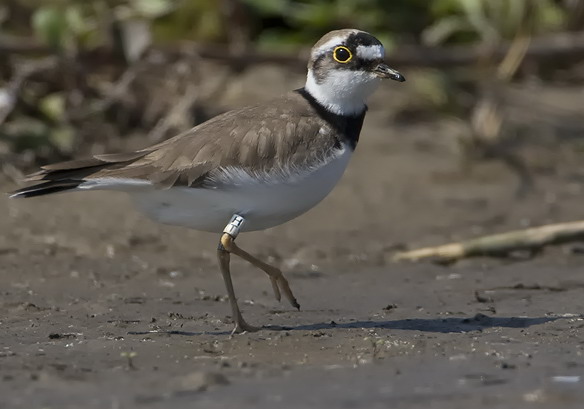
White H above T - © Cor Fikkert 2010
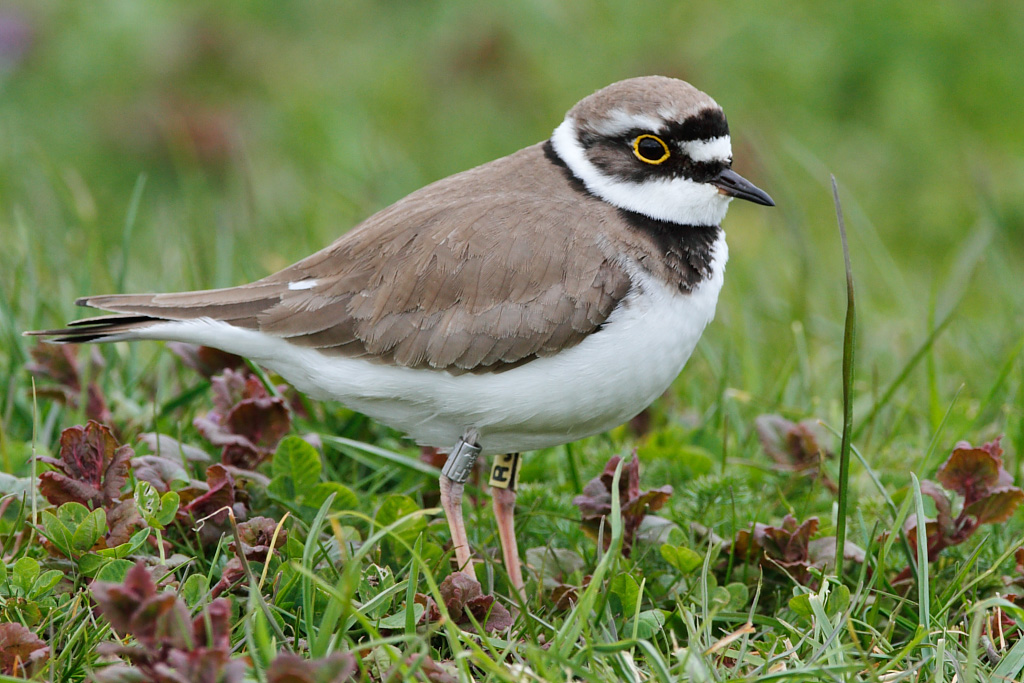
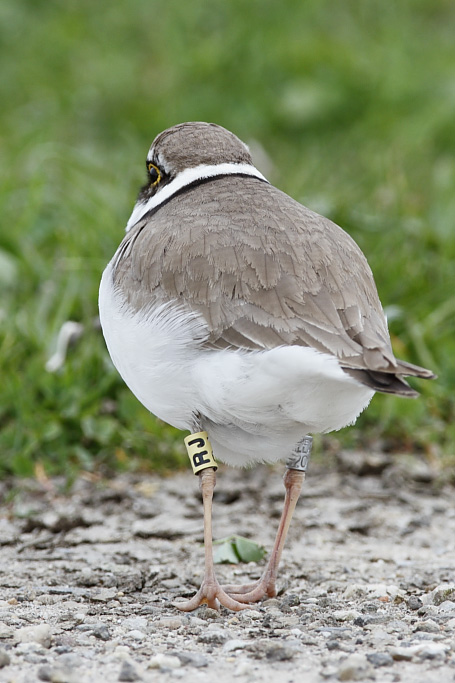
Geel RJ - © Otto Faulhaber
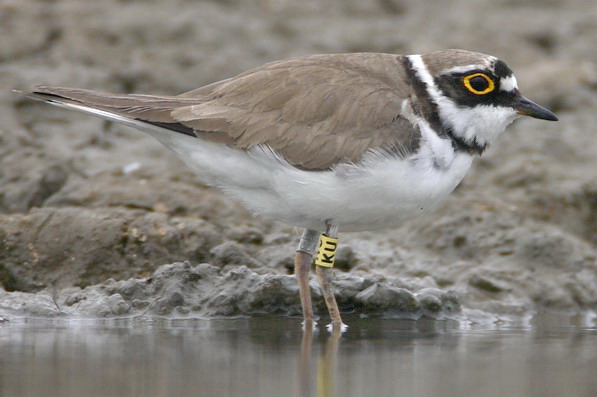
Yellow KU - © Wim van Barneveld
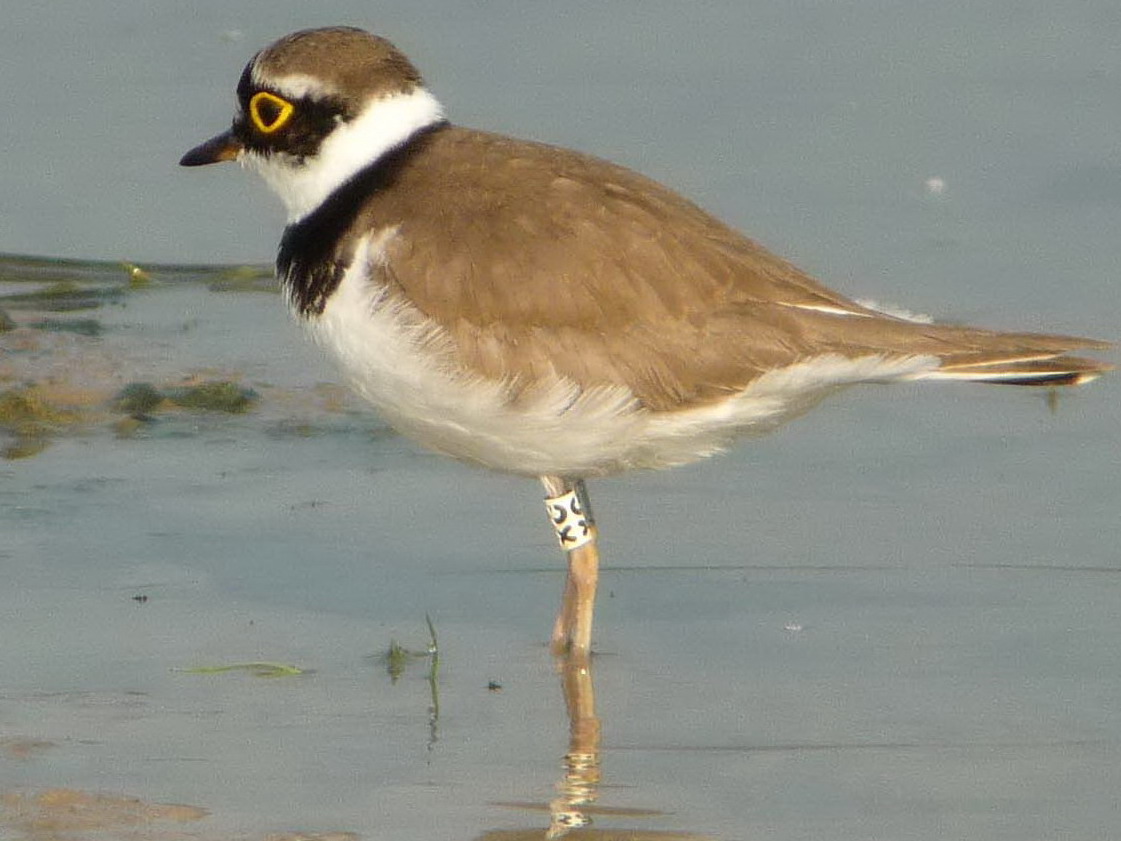
White XC - © Fred Hustings
Numbers of ringed Little Ringed Plovers:
| Jaar |
Adult |
Young |
Adults returned from earlier years |
| 1999 |
1 |
4 |
|
| 2000 |
1 |
3 |
|
| 2001 |
3 |
4 |
0 |
| 2002 |
16 |
31 |
1 |
| 2003 |
3 |
8 |
8 |
| 2004 |
4 |
19 |
5 |
| 2005 |
9 |
47 |
7 |
| 2006 |
3 |
13 |
14 |
| 2007 |
25 |
34 |
17 |
| 2008 |
10 |
25 |
30 |
| 2009 |
24 |
50 |
26 |
| 2010 |
13 |
47 |
38 |
| 2011 |
26 |
14 |
45 |
| 2012 | 11 | 23 | 31 | | 2013 | 18 | 9 | 23 | | Total ringed |
112 |
285 |
|
| Total ringed with colour ring |
138 |
299 |
|
Ringing site (green marker) and observations outside the study area
during the breeding season (red marker) and outside the breeding season
(blue marker) from Little Ringed Plovers ringed by me.
© Google Maps: markers are clickable, zooming in and -out, and sliding is possible.
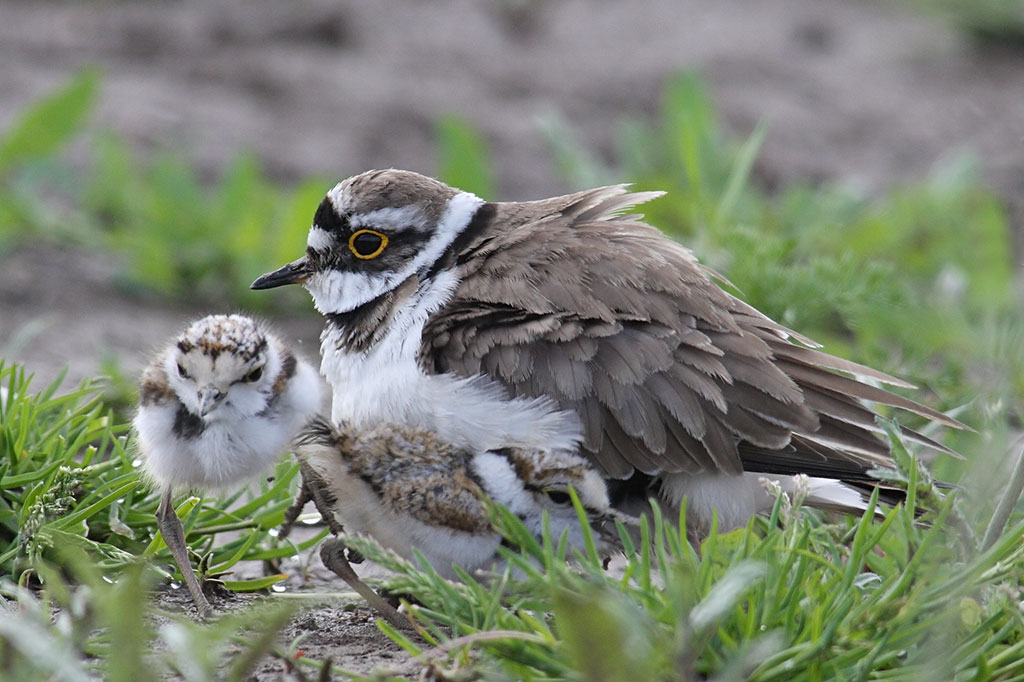
Photo: Otto Faulhaber
Codes used:
The rings are on the tibiotarsus (tibia), the colour ring on one limb and the metal ring on the other limb.
The colour ring is white, yellow, or green with 2 numbers and/or
letters. The inscription is printed three times vertically on the ring
and must be read from the bottom towards the top.
With the exception of the green (and some white) rings. On the green
rings, the code is printed horizontally on the ring, two letters above
one another, from the top towards the bottom.
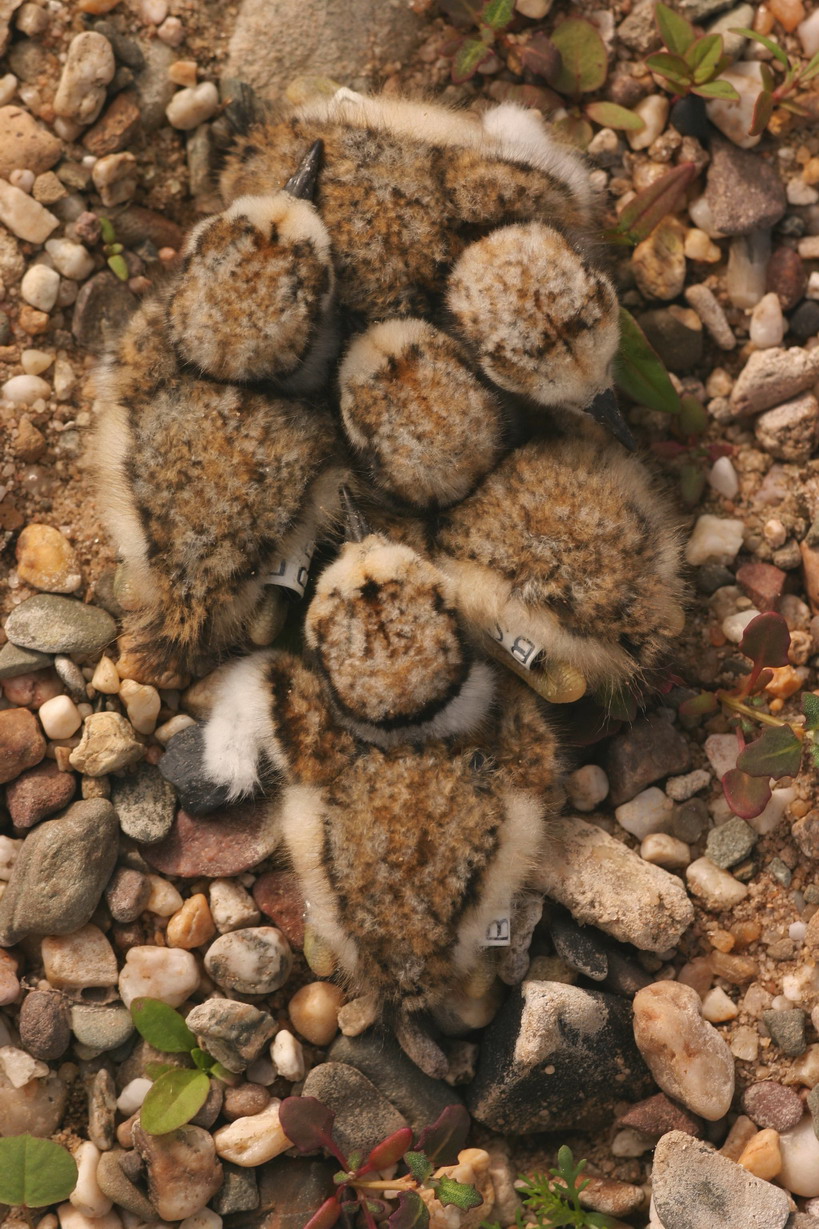
© Harvey van Diek |
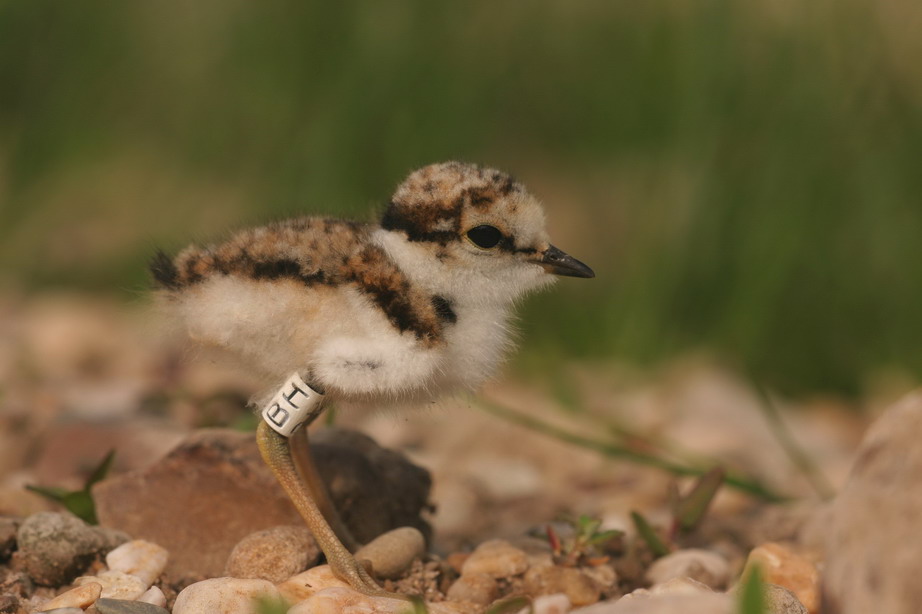
White BH - © Harvey van Diek |
Results
Especially the adults are observed to return to the study area. We
believe the young breed elsewhere. Most likely very far outside our
study area. In April 2009 an as a nestling ringed Little Ringed Plover
was read in Lauwersmeer.
And in 2009 for third succesive year a Little Ringed Plover was read in
Switserland ! This was an adult female which I had ringed on the nest
in Driel in 2005. This bird now breeds here succesfully. Photo of the
new breeding site in Switserland see below. A distance of well over 600
km! For young birds I had expected such behaviour... And in research
elsewhere, such relocations have never been noticed at all.
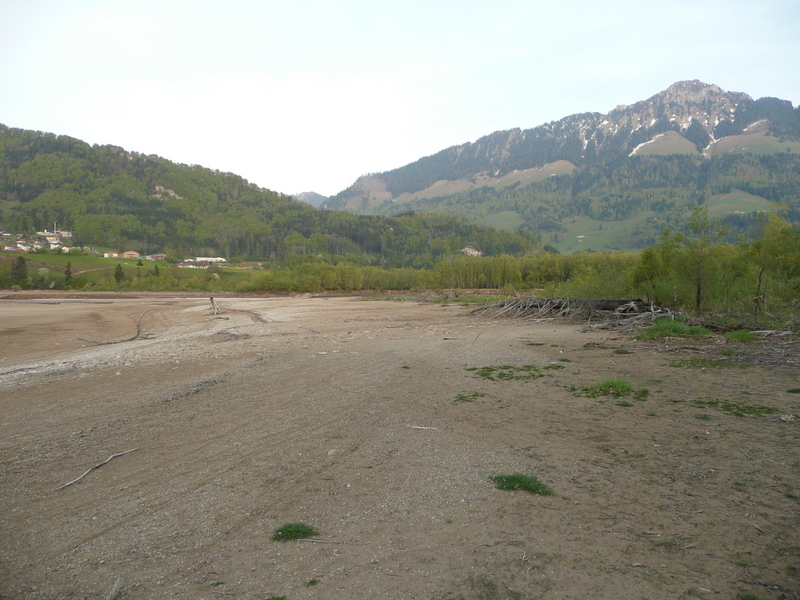
© Jérôme Gremaud
Until now there are two after summer observations from First
Calender year birds which migrated towards the North as a sort of
dispersal (Northern Groningen and along the river Eems in Germany). In
addition to this, there are observations from France on adult migrants
which travel through, one observation in autumn, and one in spring. We
see birds which were ringed as adults back in the study area. We assume
that the fledglings breed elsewhere. Possibly far outside our study
area.
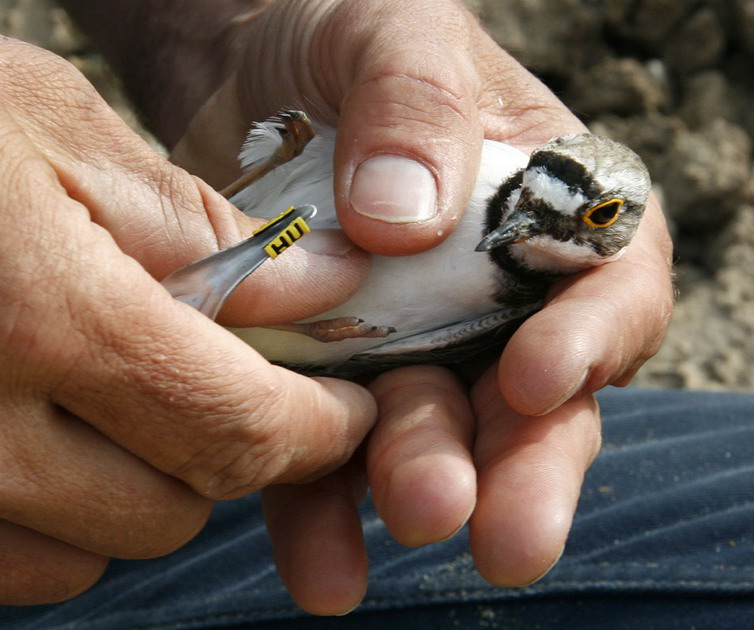 © Koos Dansen
Research elsewhere
In Schleswig-Holstein (Northern-Germany) Hein & Reiser ringed a
grand total of 6007 Little Ringed Plover (3686 as nestling and 2321 as
adult) between the end of the sixties and early nineties. Throughout
the years, 351 earlier ringed individuals were read as a breeding bird
or recaptured. 83% of these show site fidelity. The adults which move
to another breeding site were most often forced to do so. These
re-locations were on average 15 km, most often not further away than
the most suitable breeding site. One outlier was a female which moved
136 km and is kept outside the analysis.
Only 3.92% of the nestlings is later seen as breeding birds. Of these
nestlings the distance from the site of birth to the first breeding
site is on average 21 km. The females made the largest movements (male
on average 18.8 km and female 23.8 km). An outlier was a female which
re-located 604 km and is kept outside this analysis. The oldest Little
Ringed Plovers in this research were 11 (possibly 12-13) years old.
For an extensive article see Corax 18 (2000). |
© Frank Majoor. Website update
12-02-2014.
E-mail:
